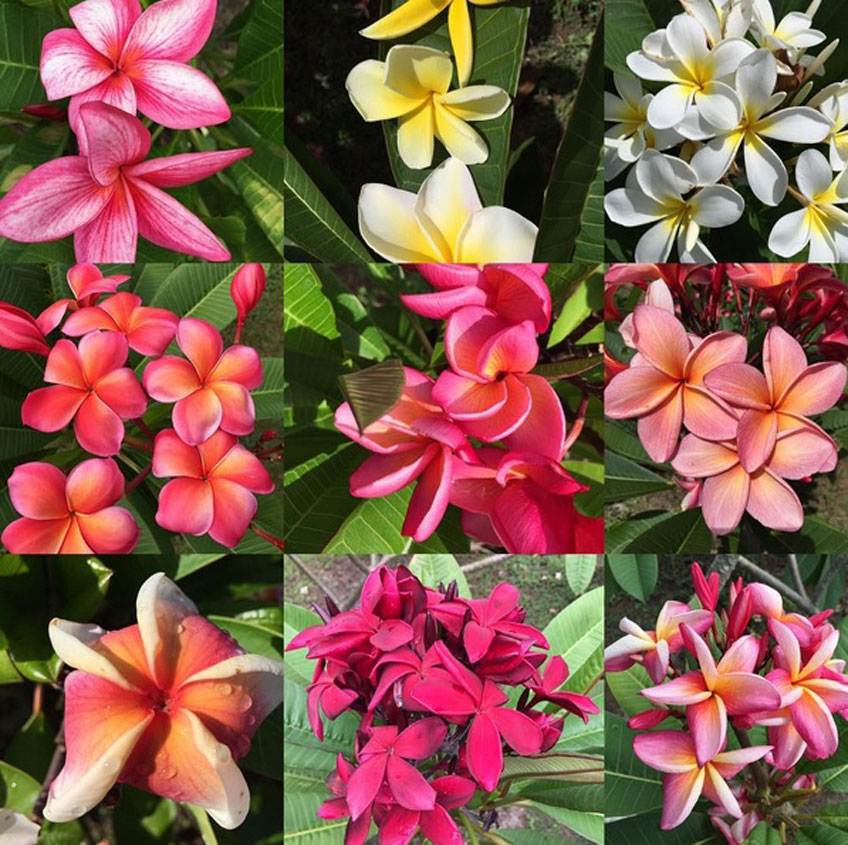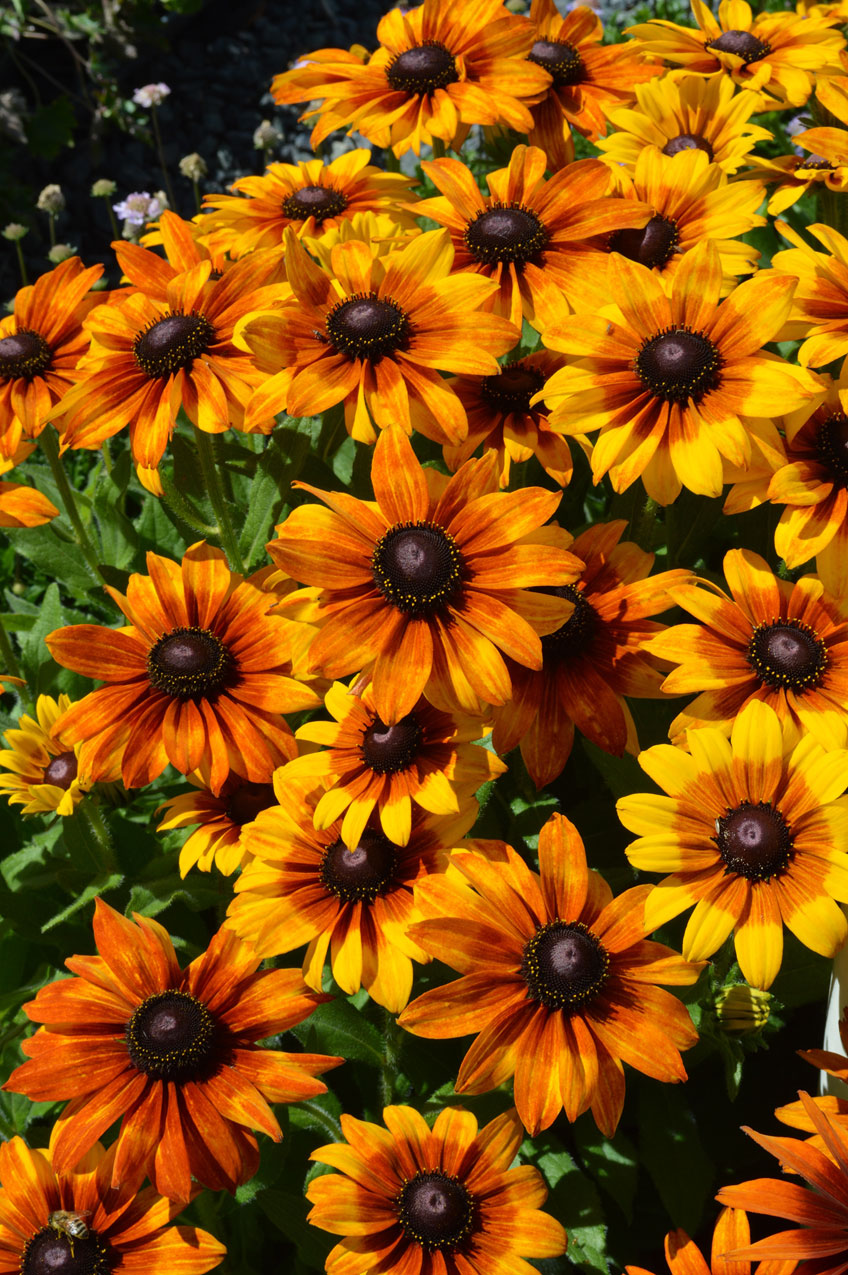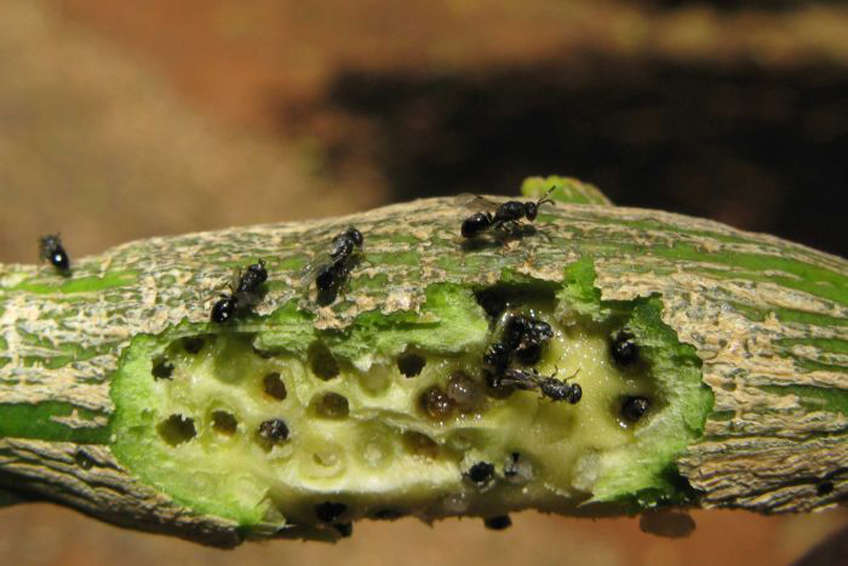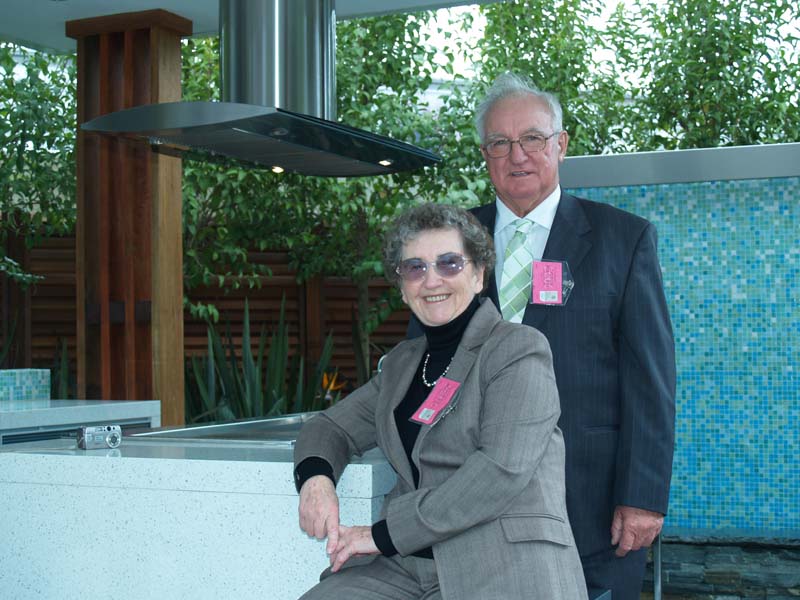Wet, wet, wet for Sydney with gusty wind and dangerous surf - wet and steamy for Brisbane.
Broadcasting live from Melbourne this weekend in the glorious Victorian sunshine - you wouldn't read about it!
Early last week I attended 'Frangipani Grove', an enormous frangipani farm with over 5000 trees, including one named after yours truly. What an honor!

Some of the frangipani varieties I saw in Queensland this week. I'll have a photo posted soon of the one they named after me.
It's Time To:
Plant autumn hues in gardens and pots.
Look for Echibeckia ‘Summerina’ which is an intergeneric cross between the perennial Rudbeckia and annual Echinacea. It flowers for a long period in a
range of rich oranges, rusty browns and mellow yellows with dark centres. As a bonus, the flowers attract bees and beneficial insects. The one here
is ‘Summerina Sunflare’.

Echibeckia ‘Summerina’
Check out Rose Introducers Australia
Bury your nose in a gloriously fragrant rose at the Rose Introducers Australia display during Melbourne International Flower and Garden Show, Wednesday
March 27 – Sunday April 2 at the Royal Exhibition Building and Carlton Gardens, Melbourne. Meet the growers, see the latest rose releases and reserve
your favourites for winter mail order.
Feed 'em up
Feed hedges, flowering plants such as roses, camellias and magnolias, and fruiting plants such as citrus using an organic based fertiliser to promote foliage,
flowers or fruit. While you’re at it, boost the value of your mulches with a generous dose of milled cow manure. Water everything in well.
Choose a Camellia sasanqua
The hardiness of these beautiful shrubs is often underestimated. Once established these upright, steady growers are tough, reliable and handsome autumn-flowering
screen plants. A light trim after flowering will keep them in shape.
Want more jobs to do in the garden this March? Check out the full article, 'It's Time To: Temperate Gardens in March'.
Bugwatch
Natural Predators of Citrus Gall Wasp: OCP gives us the 'good-oil'
There are a couple of predators for the citrus gall wasp: Megastigmus trisulcus and Megastigmus brevivalvus. They’re types of wasps which will lay their
eggs in the gall itself and their juveniles feed on the gall wasp juveniles inside the gall. Nasty business indeed!
The citrus gall wasp is native to QLD and warmer parts of NSW but it has now spread much further. At this stage it’s unclear if their predator wasps have
spread as far as they appear to be more cold sensitive. There is also increased concern that the use of systemic insecticides, in particular a group
called neonicotinoids, is wiping out large numbers of beneficial predatory insects. For these reasons relying solely on the natural predators is rarely
good enough and pruning the galls is still required.

The Gall will develop over winter and the gall wasp will emerge from their eggs in spring. Affected stems must be cut off and put in the bin, not the compost. Photo - NSW Department of Primary Industries.
Spray Options for Citrus Gall Wasp
Regular sprays of eco-oil during spring when the adult wasps are about could be helpful on two fronts. First, eco-oil is known to deter some insects from
laying eggs (like citrus leaf-miner) and so it may also deter the citrus gall wasp. Second, eco-oil contains special plant extracts which attract predatory
insects that feed on common pests, including tiny wasps. It may attract the natural predators of the citrus gall wasp as well.
It's important to note that these are just possible effects of eco-oil sprays. Trial work needs to be conducted to confirm if eco-oil will work in this
way for this particular pest. At this stage pruning away galls is the only proven method to give control.
Last year I talked about a Victorian initiative to reduce gall wasp numbers in backyard citrus.
Landscape gardener Kaye Roberts-Palmer is the co-founder of 'Save Our Citrus', a grassroots campaign to fight the citrus gall wasp in Melbourne where the
problem is now worse than ever.
Save Our Citrus is running the 'Prune In June' campaign this month to encourage citrus growers across the city to find and destroy the wasps before spring.
A good reminder for those of us growing citrus in the in New South Wales and Queensland to do the same
Come away with us
Outback Australia 29 Aug – 13 Sep 2017 with Libby Cameron
Experience the wide open spaces of the Outback with brilliant colours all around. See carpets of wildflowers, birds galore and vast starry nights. Traverse the Strezlecki track and visit iconic
bush towns – Innamincka, Tiboorburra and Broken Hill. See the spectacular landscape of Wilpena Pound and Lake Mungo.
This is a rare opportunity to travel with a small group to remote parts of Australia.
To join Libby and the group on this fabulous tour go to the Ross Tours website,
or call Royce or Roslyn at Ross Tours on 1300 233 200.

The red dunes of Strezlecki Track
Garden News
The First Lady of Gardening: Dawn Fleming
Dawn has spent years promoting gardening and encouraging women in particular to get into gardening professionally. Dawn's life has been full of experiences
at the peak of gardening excellence, including several award winning show gardens at the Chelsea Flower Show.
Now, to share these experiences with the gardening world Dawn has just published a book of her letters from a life of garden travel entitled "Dawn: a collection
of community letters". To get hold of this fabulous book Call Flemings nursery on (03)97566105 or email sales@flemings.com.au

Dawn and Don Fleming at the Chelsea Flower Show.